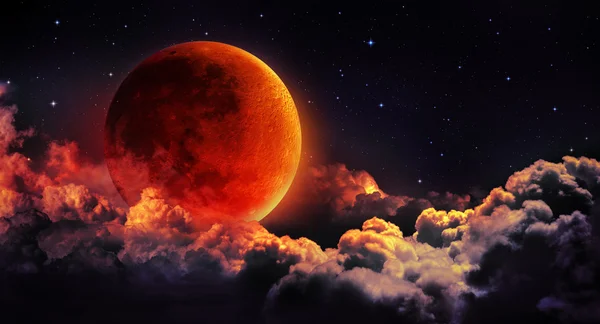On the night of Sunday, September 7, 2025, the skies over Kigali and across Rwanda glowed red as a rare total lunar eclipse—commonly known as a “blood moon”—unfolded before the eyes of stargazers. The celestial phenomenon, lasting over an hour, was visible across much of the world, including Asia, Africa, Europe, and even parts of Australia.
For many who gathered outdoors to watch, the event was nothing short of breathtaking. “It was as if the moon was on fire,” said a Kigali resident who joined neighbors in their backyard to witness the eclipse.
A Rare Alignment
Astronomers explain that a blood moon occurs when the Sun, Earth, and Moon align perfectly. During this alignment, the Earth passes directly between the Sun and the Moon, blocking sunlight from directly illuminating the lunar surface. Instead, Earth’s atmosphere bends and scatters light, casting a reddish hue over the Moon.
“The red glow is caused by the same effect that makes sunsets appear orange and red,” explained an astronomer at the Indian Institute of Astrophysics in Bangalore. “It’s a reminder of how interconnected Earth’s atmosphere is with what we see in the night sky.”
The eclipse began at 17:30 GMT and ended at 18:52 GMT, with peak visibility occurring when the Moon was entirely shadowed by the Earth.
Global Spectacle
The blood moon was particularly clear in Asia, where observers in India and China reported stunning views of the crimson lunar disk. In East Africa—including Rwanda, Uganda, and Kenya—skies cleared just in time for millions of residents to enjoy the show. Meanwhile, in parts of Western Australia, early risers caught the tail end of the eclipse.
Social media lit up with images of the eclipse, with hashtags like #BloodMoon2025 trending globally on X (formerly Twitter).
Previous Sightings and Significance
The last total lunar eclipse occurred in March 2025, while another notable blood moon was recorded in 2022. Astronomers note that while lunar eclipses happen several times a year, total lunar eclipses—where the Moon turns a striking red—are less frequent and widely celebrated events.
Beyond the science, lunar eclipses often carry cultural and spiritual significance. In many African and Asian traditions, eclipses are seen as powerful symbols of renewal, change, or ancestral presence.
Looking Ahead
Astronomers predict that the next total lunar eclipse visible in Africa will occur in 2026, though partial eclipses will be observed before then. For skywatchers, Sunday’s spectacle was not just a rare scientific event but also a moment of collective wonder shared across continents.
As one Kigali stargazer summed it up: “It’s amazing to think that people in Asia, Africa, and Europe were all looking at the same red moon at the same time. It makes the world feel connected.”





